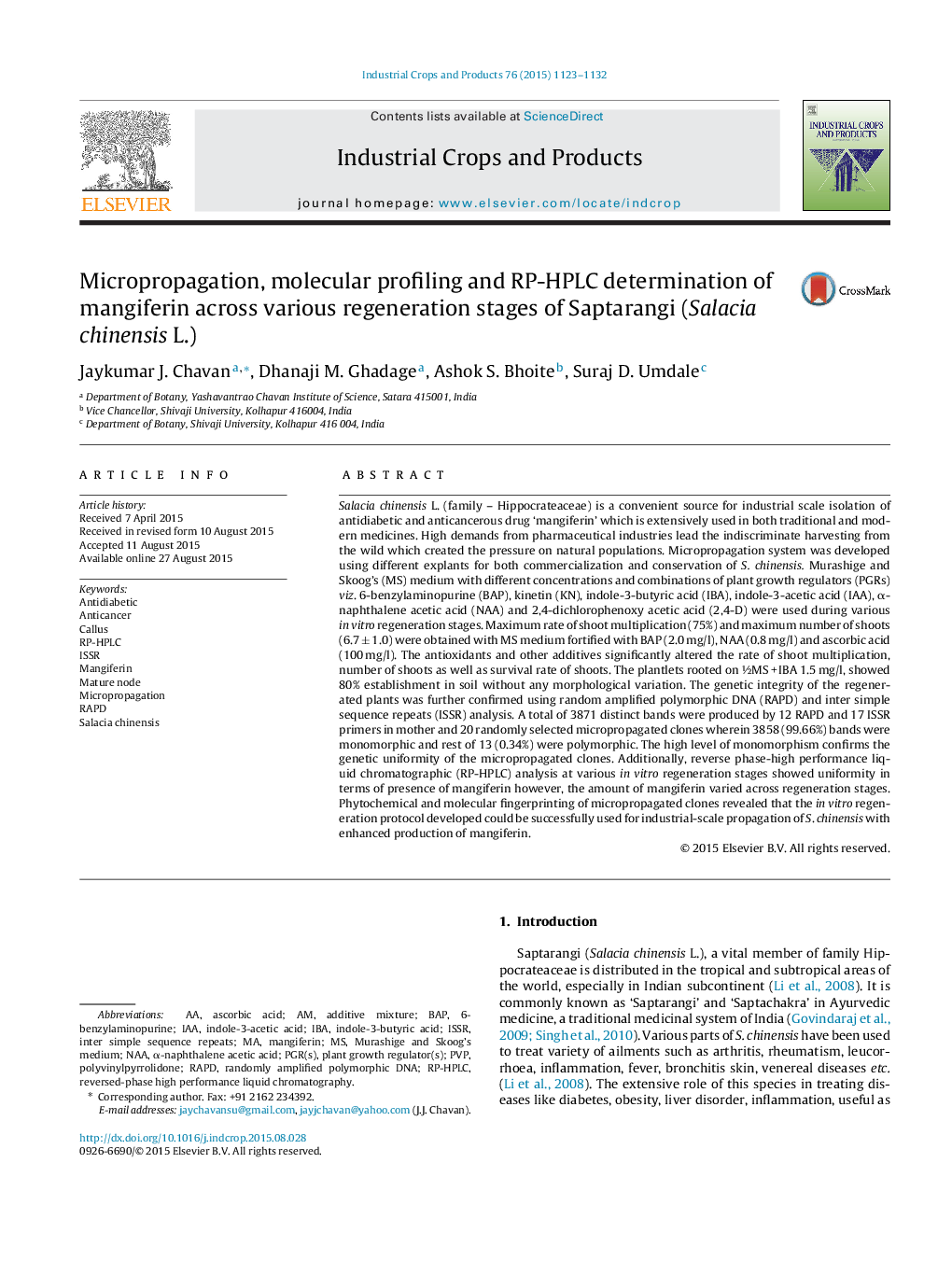| Article ID | Journal | Published Year | Pages | File Type |
|---|---|---|---|---|
| 6375766 | Industrial Crops and Products | 2015 | 10 Pages |
â¢S. chinensis is a source of mangiferin - an antidiabetic and anticancer drug.â¢Efficient and industrial-scale propagation system of S. chinensis for first time.â¢Molecular markers authenticated the genetic stability of in vitro raised clones.â¢RP-HPLC confirmed the accumulation of mangiferin at various regeneration stages.â¢Elevated accumulation of mangiferin in leaf-derived callus.â¢The investigation will assist to fulfill local and industrial necessitates.
Salacia chinensis L. (family - Hippocrateaceae) is a convenient source for industrial scale isolation of antidiabetic and anticancerous drug 'mangiferin' which is extensively used in both traditional and modern medicines. High demands from pharmaceutical industries lead the indiscriminate harvesting from the wild which created the pressure on natural populations. Micropropagation system was developed using different explants for both commercialization and conservation of S. chinensis. Murashige and Skoog's (MS) medium with different concentrations and combinations of plant growth regulators (PGRs) viz. 6-benzylaminopurine (BAP), kinetin (KN), indole-3-butyric acid (IBA), indole-3-acetic acid (IAA), α-naphthalene acetic acid (NAA) and 2,4-dichlorophenoxy acetic acid (2,4-D) were used during various in vitro regeneration stages. Maximum rate of shoot multiplication (75%) and maximum number of shoots (6.7 ± 1.0) were obtained with MS medium fortified with BAP (2.0 mg/l), NAA (0.8 mg/l) and ascorbic acid (100 mg/l). The antioxidants and other additives significantly altered the rate of shoot multiplication, number of shoots as well as survival rate of shoots. The plantlets rooted on ½MS + IBA 1.5 mg/l, showed 80% establishment in soil without any morphological variation. The genetic integrity of the regenerated plants was further confirmed using random amplified polymorphic DNA (RAPD) and inter simple sequence repeats (ISSR) analysis. A total of 3871 distinct bands were produced by 12 RAPD and 17 ISSR primers in mother and 20 randomly selected micropropagated clones wherein 3858 (99.66%) bands were monomorphic and rest of 13 (0.34%) were polymorphic. The high level of monomorphism confirms the genetic uniformity of the micropropagated clones. Additionally, reverse phase-high performance liquid chromatographic (RP-HPLC) analysis at various in vitro regeneration stages showed uniformity in terms of presence of mangiferin however, the amount of mangiferin varied across regeneration stages. Phytochemical and molecular fingerprinting of micropropagated clones revealed that the in vitro regeneration protocol developed could be successfully used for industrial-scale propagation of S. chinensis with enhanced production of mangiferin.
